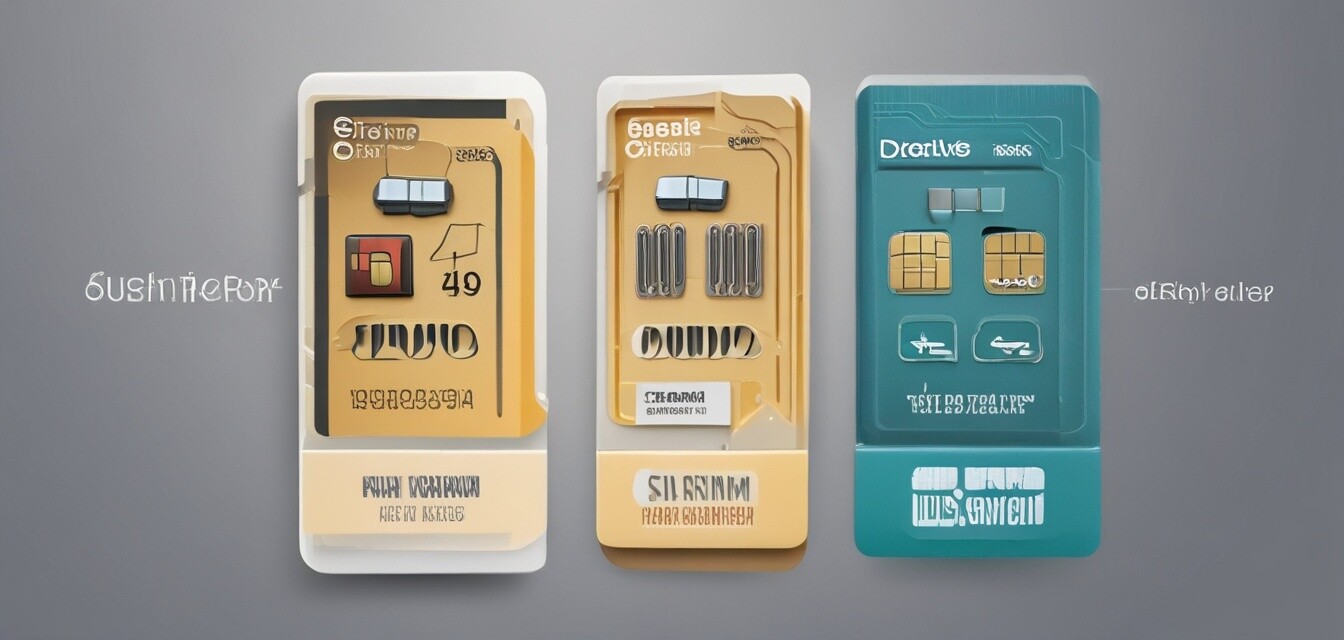
The Key Differences Between eSIM and Physical SIM Cards
Key Takeaways
- eSIMs offer greater flexibility and convenience with remote activation and multiple profiles.
- Physical SIM cards provide a traditional approach and can be easily switched between devices.
- Understanding the differences helps travelers choose the best option for connectivity needs.
- Various factors such as travel SIM card kits and dual SIM phones can enhance usage experiences.
- Stay informed about buying guides to make savvy decisions when purchasing SIM cards.
Traveling without a reliable internet connection can be challenging. Understanding the options available to you is crucial, especially when it comes to SIM cards. This article delves into the key differences between eSIMs and traditional physical SIM cards, helping you make an informed decision for your travels.
What is a Physical SIM Card?
A physical SIM card is a small plastic card that you insert into your mobile device to connect to a network. These cards store information such as your phone number, and local network settings, and facilitate access to services.
Advantages of Physical SIM Cards
- Easy to switch between devices
- Compatible with almost all mobile phones
- No reliance on network settings for activation
Disadvantages of Physical SIM Cards
- Limited to one profile at a time
- Physical damage can render them unusable
- Less flexible when changing networks or countries
What is an eSIM?
An eSIM (embedded SIM) is a digital version of a traditional SIM card that is built directly into your device. Unlike physical SIM cards, eSIMs can be reprogrammed remotely without the need to switch out hardware.
Advantages of eSIMs
- Multiple profiles can be stored for different carriers
- Easy switching between carriers or plans with a simple activation process
- More environmentally friendly as it reduces waste from physical cards
Disadvantages of eSIMs
- Requires compatible devices (not all phones support eSIM)
- Some users may find the digital switching process complicated
- Potentially limited availability in certain regions
Comparison Table
| Feature | Physical SIM Card | eSIM |
|---|---|---|
| Flexibility | Limited to one active SIM at a time | Multiple profiles can be stored and switched |
| Switching carriers | Requires physical card change | Can be done via software settings |
| Device compatibility | Works with most devices | Requires eSIM-enabled devices |
| Physical damage | Susceptible to damage | Not prone to physical damage |
| Environmental impact | Contributes to plastic waste | More eco-friendly solution |
Which One Should You Choose?
The choice between eSIM and physical SIM cards ultimately depends on personal preferences and travel needs. Here are some factors to consider:
- Travel frequency: Frequent travelers may prefer eSIMs for their ability to switch carriers without physical changes.
- Device compatibility: Check if your device supports eSIM if you plan to make the switch.
- Ease of use: Some users may find physical SIM cards easier to manage, especially those less familiar with tech.
Pros of eSIMs
- Convenience of switching
- Storage of multiple plans
- Reduced physical waste
Cons of eSIMs
- Device compatibility is limited
- Set-up may be challenging for some users
Final Thoughts
Understanding the essential differences between eSIMs and traditional physical SIM cards can enhance your travel experience significantly. Consider your personal needs, travel habits, and device compatibility when making your selection. For more information on travel-friendly SIM card solutions, check out our news and trends blog, highlighting the latest in SIM technology.